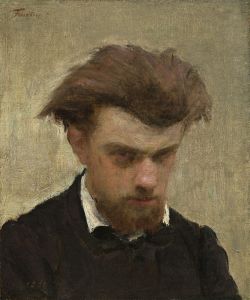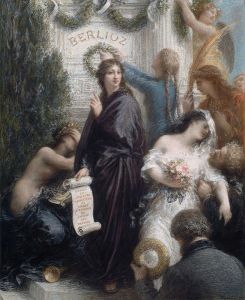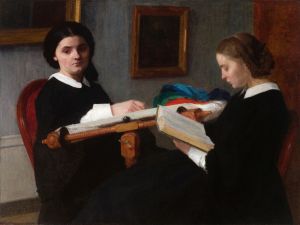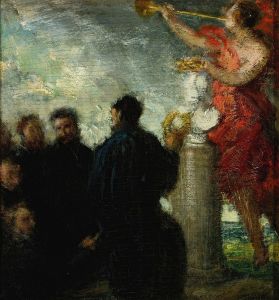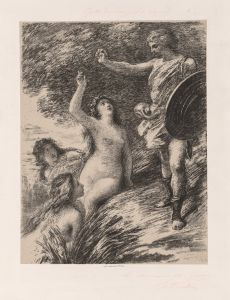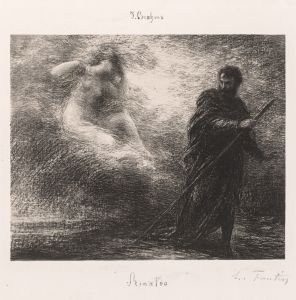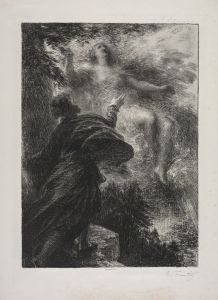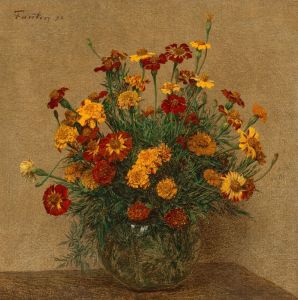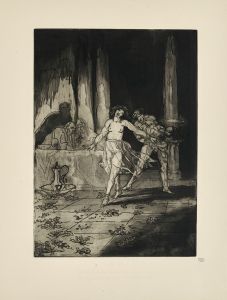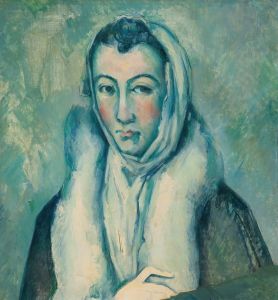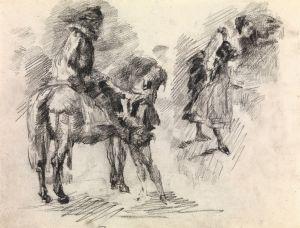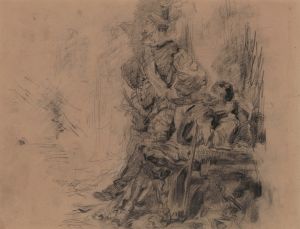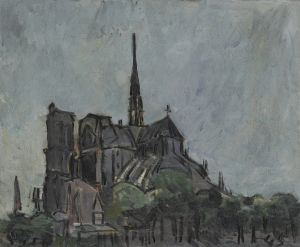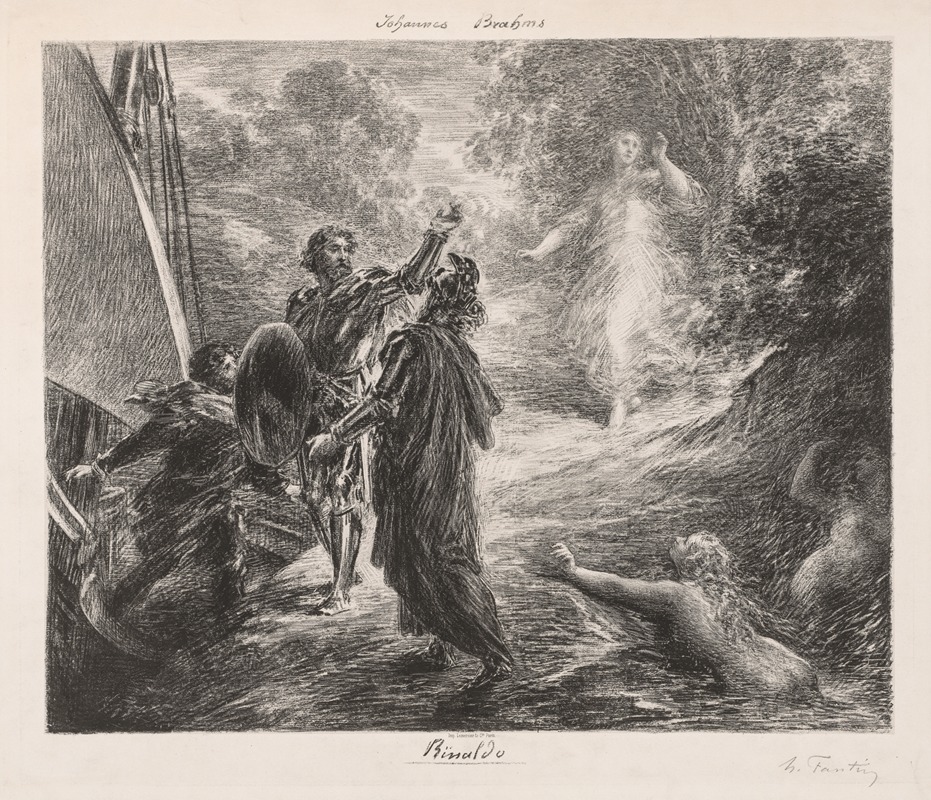
Rinaldo
A hand-painted replica of Henri Fantin-Latour’s masterpiece Rinaldo, meticulously crafted by professional artists to capture the true essence of the original. Each piece is created with museum-quality canvas and rare mineral pigments, carefully painted by experienced artists with delicate brushstrokes and rich, layered colors to perfectly recreate the texture of the original artwork. Unlike machine-printed reproductions, this hand-painted version brings the painting to life, infused with the artist’s emotions and skill in every stroke. Whether for personal collection or home decoration, it instantly elevates the artistic atmosphere of any space.
Henri Fantin-Latour was a French painter known for his exquisite still lifes and group portraits, often featuring his contemporaries in the arts. However, one of his lesser-known works is "Rinaldo," which draws inspiration from literature rather than the artist's usual subjects.
"Rinaldo" by Henri Fantin-Latour is a painting that takes its theme from the epic poem "Jerusalem Delivered" ("La Gerusalemme Liberata") by the Italian poet Torquato Tasso. This poem, published in 1581, is a romanticized account of the First Crusade, focusing on the Christian knights' efforts to capture Jerusalem. Among the various characters in Tasso's work, Rinaldo is one of the principal knights, known for his bravery and romantic entanglements.
Fantin-Latour's painting captures a specific moment from the poem, where Rinaldo is enchanted by the sorceress Armida. In Tasso's narrative, Armida is sent to sow discord among the Christian knights but ends up falling in love with Rinaldo. She uses her magic to lure him away to an idyllic garden, where he becomes entranced and forgets his duties as a knight. This scene is rich with themes of love, temptation, and the conflict between duty and desire.
Fantin-Latour's interpretation of this literary episode is marked by his characteristic attention to detail and his ability to convey emotion through composition and color. The painting likely features a lush, dreamlike setting, capturing the enchantment and otherworldly beauty of Armida's garden. The figures of Rinaldo and Armida would be central to the composition, with their expressions and postures conveying the tension between enchantment and the eventual realization of duty.
While Fantin-Latour is primarily celebrated for his still lifes and portraits, "Rinaldo" demonstrates his ability to engage with narrative and literary themes. This work reflects the broader 19th-century interest in medieval and Renaissance literature, which was prevalent among artists of the Romantic and later Symbolist movements. Fantin-Latour's contemporaries, such as the Pre-Raphaelites in England, also explored similar themes, drawing inspiration from historical and mythological sources.
The painting "Rinaldo" is an example of how Fantin-Latour, despite his reputation for more static subjects, could effectively capture dynamic and narrative-driven scenes. His use of light and shadow, combined with a delicate color palette, would have contributed to the ethereal and magical atmosphere of the piece.
Though not as widely recognized as some of his other works, "Rinaldo" remains a testament to Fantin-Latour's versatility and his engagement with the literary culture of his time. It highlights his ability to transcend the boundaries of genre, moving beyond still life and portraiture to explore complex themes of love, temptation, and heroism drawn from classic literature.





